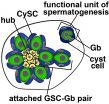(Press-News.org) Athens, Ga. - Researchers from the University of Georgia have determined that various freshwater sources in Georgia, such as rivers and lakes, could feature levels of salmonella that pose a risk to humans. The study is featured in the July edition of PLOS One.
Faculty and students from four colleges and five departments at UGA partnered with colleagues from the Centers for Disease Control and Prevention and the Georgia Department of Public Health to establish whether or not strains of salmonella exhibit geographic trends that might help to explain differences in rates of human infection.
"In this study, salmonella isolated from water and wildlife were collected over a period of 10 years from distinct rural areas in Georgia, both geographically--north versus south--and in terms of prevalence of salmonellosis in humans--lower versus higher. Because Georgia has some of the highest case rates for reported salmonella infections in the nation, this was an ideal area to begin to examine the ecology of salmonella," said study co-author Erin Lipp, a professor of environmental health sciences in the UGA College of Public Health.
Salmonella infections are one of the top causes of gastrointestinal disease in the U.S., and while regulatory agencies have made progress in reducing foodborne transmission of the pathogen, other infection sources, including exposure to water, have not been as thoroughly examined.
To complete this research, the scholars collected samples from two different geographic regions of Georgia--the low-lying coastal plain and the piedmont, which is higher in elevation. Data was collected from six stations in the Little River watershed near Tifton, which has one of the highest case rates for salmonellosis in the state, and along the North Oconee River in Jackson County, a lower case rate area in Georgia. Water samples from all sites were gathered from December 2010 to November 2011. Samples from surrounding wildlife were also collected, and archived samples from these areas dating back to 2005 were also included.
Most significantly, the research team found that water sources could be an underestimated source of salmonella exposure to humans. Though the frequency that salmonella was found in north and south Georgia was similar, salmonella strains with DNA fingerprints matching those found in humans were more commonly found in south Georgia.
Specifically, rural areas of south Georgia had matches between the environment and humans at the 90 percent rate for salmonella Muenchen, a strain commonly associated with human cases. The researchers also found that wildlife, especially small mammals like raccoons and opossums frequenting these freshwater sources, could be carriers of the salmonella pathogen.
"Salmonella is a highly diverse and apparently well-adapted bacterium in the Southeastern U.S., and environmental exposures may be important in understanding and eventually mitigating risk from this agent," Lipp said.
By studying how salmonella interacts with its environment, the UGA team hopes to gain a better understanding of how it can be controlled. They are interested in continuing their work on this issue by further examining the linkage between animals, humans and their shared environments to determine how the bacteria moves through various host organisms. The researchers also hope to explore the impact of different variables in salmonella's physical environment, such as the role of climate and weather.
"This study brought together scientists with diverse expertise in ecology, geography, environmental sciences, microbiology, molecular biology and epidemiology to tackle a complex and daunting question," said John Maurer, the paper's principal author and professor of population health in UGA's College of Veterinary Medicine.
INFORMATION:
UGA researchers who collaborated with Maurer and Lipp on this project include Gordon Martin and Steven Valeika from the College of Public Health; Dana Cole from the College of Public Health and CDC; Ying Cheng and Susan Sanchez from the College of Veterinary Medicine; Sonia Hernandez from College of Veterinary Medicine and Warnell School of Forestry and Natural Resources; and Marguerite Madden and Andrea Presotto from the Franklin College of Arts and Sciences.
The study is available online at http://journals.plos.org/plosone/article?id=10.1371/journal.pone.0128937.
DURHAM, N.C. - Children with even mild or passing bouts of depression, anxiety and/or behavioral issues were more inclined to have serious problems that complicated their ability to lead successful lives as adults, according to research from Duke Medicine.
Reporting in the July 15 issue of JAMA Psychiatry, the Duke researchers found that children who had either a diagnosed psychiatric condition or a milder form that didn't meet the full diagnostic criteria were six times more likely than those who had no psychiatric issues to have difficulties in adulthood, including ...
Children with psychiatric problems were more likely to have health, legal, financial and social problems as adults even if their psychiatric disorders did not persist into adulthood and even if they did not meet the full diagnostic criteria for a disorder, according to an article published online by JAMA Psychiatry.
Neuropsychiatric disorders among young people ages 10 to 24 are a leading cause of disease burden globally. Unlike many chronic physical health problems, most psychiatric disorders are first diagnosed in childhood, which allows the disorder to affect a person's ...
PHILADELPHIA - Stem cells are key for the continual renewal of tissues in our bodies. As such, manipulating stem cells also holds much promise for biomedicine if their regenerative capacity can be harnessed. However, understanding how stem cells govern normal tissue renewal is a field still in its infancy.
Researchers at the Perelman School of Medicine at the University of Pennsylvania are making headway in this area by studying stem cells in their natural environment in an organism. Stem cell populations reside in areas called niches deep within different types of organs. ...
States with more restrictive alcohol policies and regulations have lower rates of self-reported drunk driving, according to a new study by researchers at the Boston University schools of public health and medicine and the University of Minnesota School of Public Health.
The research team assigned each state an "alcohol policy score," based on an aggregate of 29 alcohol policies, such as alcohol taxation and the use of sobriety checkpoints. Each 1 percentage point increase in the score was found to be associated with a 1 percent decrease in the likelihood of impaired driving, ...
Final results of the randomized intergroup EORTC, LYSA (Lymphoma Study Association), FIL (Fondazione Italiana Linfomi) H10 trial presented at the 13th International Conference on Malignant Lymphoma in Lugano, Switzerland, on 19 June 2015 show that early FDG-PET ( 2-deoxy-2[F-18]fluoro-D-glucose positron emission tomography) adapted treatment improves the outcome of early FDG-PET-positive patients with stages I/II Hodgkin lymphoma.
Dr. John Raemaekers of the Radboud University Medical Center Nijmegen and the Rijnstate Hospital Arnhem, The Netherlands, and EORTC principal ...
HOUSTON - (July 15, 2015) - Three-dimensional structures of boron nitride might be the right stuff to keep small electronics cool, according to scientists at Rice University.
Rice researchers Rouzbeh Shahsavari and Navid Sakhavand have completed the first theoretical analysis of how 3-D boron nitride might be used as a tunable material to control heat flow in such devices.
Their work appears this month in the American Chemical Society journal Applied Materials and Interfaces.
In its two-dimensional form, hexagonal boron nitride (h-BN), aka white graphene, looks ...
A University of Toronto research team has discovered new details about a key gene involved in ALS, perhaps humanity's most puzzling, intractable disease.
In this fatal disorder with no effective treatment options, scientists (including members of U of T) achieved a major breakthrough in 2011 when they discovered mutations in the gene C9orf72, as the most frequent genetic cause of ALS and frontotemporal dementia. But little was known about how this gene and its related protein worked in the cell.
To solve this problem, Professor Janice Robertson and her team at the ...
Sapphirina, or sea sapphire, has been called "the most beautiful animal you've never seen," and it could be one of the most magical. Some of the tiny, little-known copepods appear to flash in and out of brilliantly colored blue, violet or red existence. Now scientists are figuring out the trick to their hues and their invisibility. The findings appear in the Journal of the American Chemical Society and could inspire the next generation of optical technologies.
Copepods are tiny aquatic crustaceans that live in both fresh and salt water. Some males of the ocean-dwelling ...
Five years ago this week, engineers stopped the Deepwater Horizon (DWH) oil spill -- the largest one in U.S. history, easily displacing the Exxon Valdez spill from the top spot. Now, Chemical & Engineering News (C&EN), the weekly newsmagazine of the American Chemical Society, takes a look at the lessons scientists are learning from these accidents to improve clean-up efforts and, perhaps, prevent spills altogether.
C&EN Senior Editor Jyllian Kemsley explains that although both spills were caused by human error, they each posed unique challenges. When the tanker Exxon ...
"No swimming" signs have already popped up this summer along coastlines where fecal bacteria have invaded otherwise inviting waters. Some vacationers ignore the signs while others resign themselves to tanning and playing on the beach. But should those avoiding the water be wary of the sand, too? New research in the ACS journal Environmental Science & Technology investigates reasons why the answer could be "yes."
Sewage-contaminated coastal waters can lead to stomach aches, diarrhea and rashes for those who accidentally swallow harmful microbes or come into contact with ...

